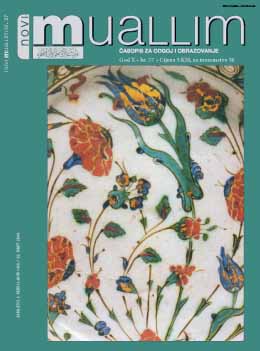KONZERVACIJA I RESTAURACIJA SLIKANIH DEKORACIJA I DESAKRALIZACIJA MOLITVENOG PROSTORA DŽAMIJE
ONSERVATION AND RESTORATION OF THE PAINTED DECORATIONS AND DESACRALIZATION OF THE PRAYER SPACE OF THE MOSQUE
Author(s): Amra HadžihasanovićSubject(s): Cultural history
Published by: Rijaset Islamske zajednice u Bosni i Hercegovini
Summary/Abstract: In the paper “Conservation and Restoration of the Painted Decorations and Desacralization of the Prayer space of the Mosque“ we wanted to address the „vulnerability“ of the term „sacred“ within the setting of the prayer space of the Islamic sacral architecture in the process of restoration and conservation of the painted decorations and plastics. In terms of the issue of preservation and presentation of painted decorations as remnants of material culture in the interior of the prayer space of the mosque as the sacred space, there are certain problems and dilemmas that appear in theory of conservation and restoration as well as in practice which is based on valid international documents and primarily on well-known Venice Charter, as one of the most significant documents dealing with the issue of protection of cultural and historical heritage. Indeed, we are faced with the situation where principles of restoration and conservation are conflicting with the principles of Islamic art when they are applied within the prayer space. This situation occurs as the consequence of failure to distinguish the sacral space from any other space in restoration and conservation theory and practice. Without complying with the nature of Islamic art in the process of protection, this principle is surely violated which in turn leads to loss of attribute of sacred in the setting of prayer space of the mosque or otherwise its consequence is its desacralization. Since the mosque as the place of worship (ibadat), while surviving through time acquiring the status of cultural and historical monument and at the same time, did not loose its primary function, the problem of transformation of the prayer space into space that takes on the features of the museum is imposed. This is completely unacceptable from the aspect of the Islamic spirituality. I, therefore, find it necessary to ask this question: What will happen in the way we deal with this problem, if the Islamic art as the reflection is not thought through inside? What are the consequence if while dealing with this issue, we exclude completely natural connection that must exist in relation prayer space – prayer or spiritual reflection of the prayer space with the act of the prayer itself?
Journal: Novi Muallim
- Issue Year: 2009
- Issue No: 37
- Page Range: 50-60
- Page Count: 11
- Language: Bosnian

